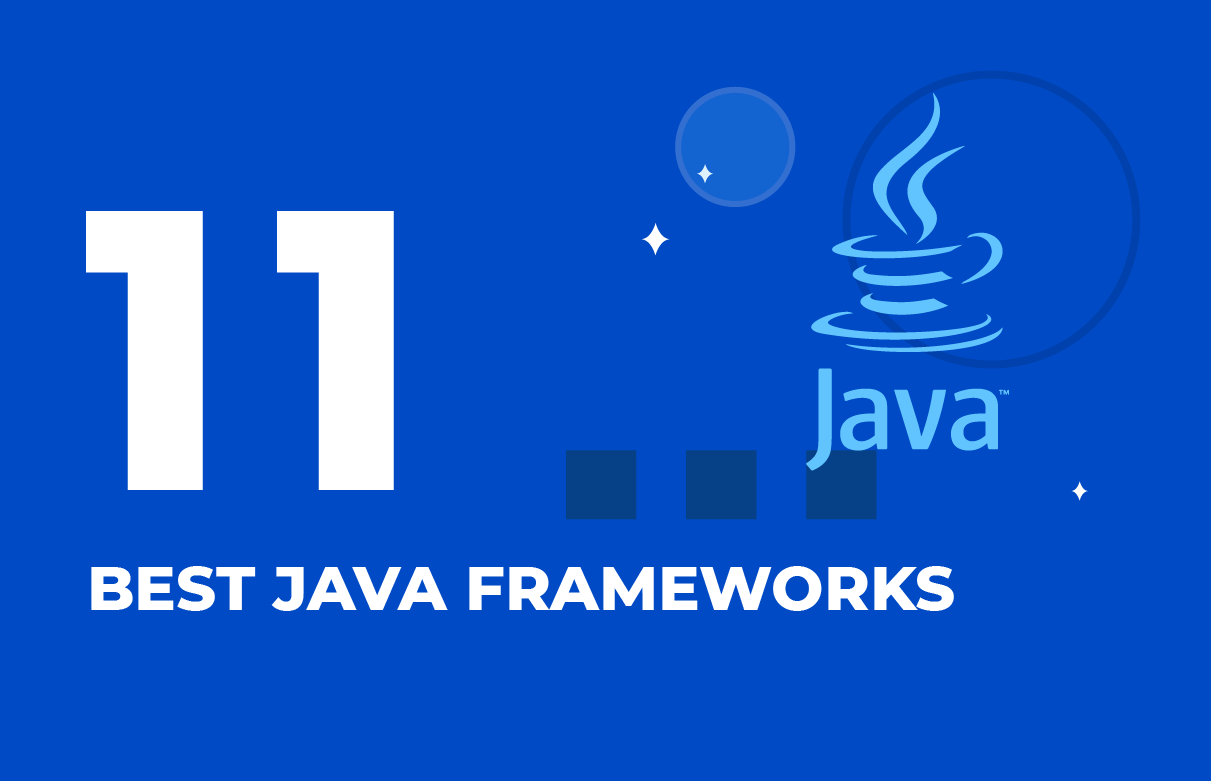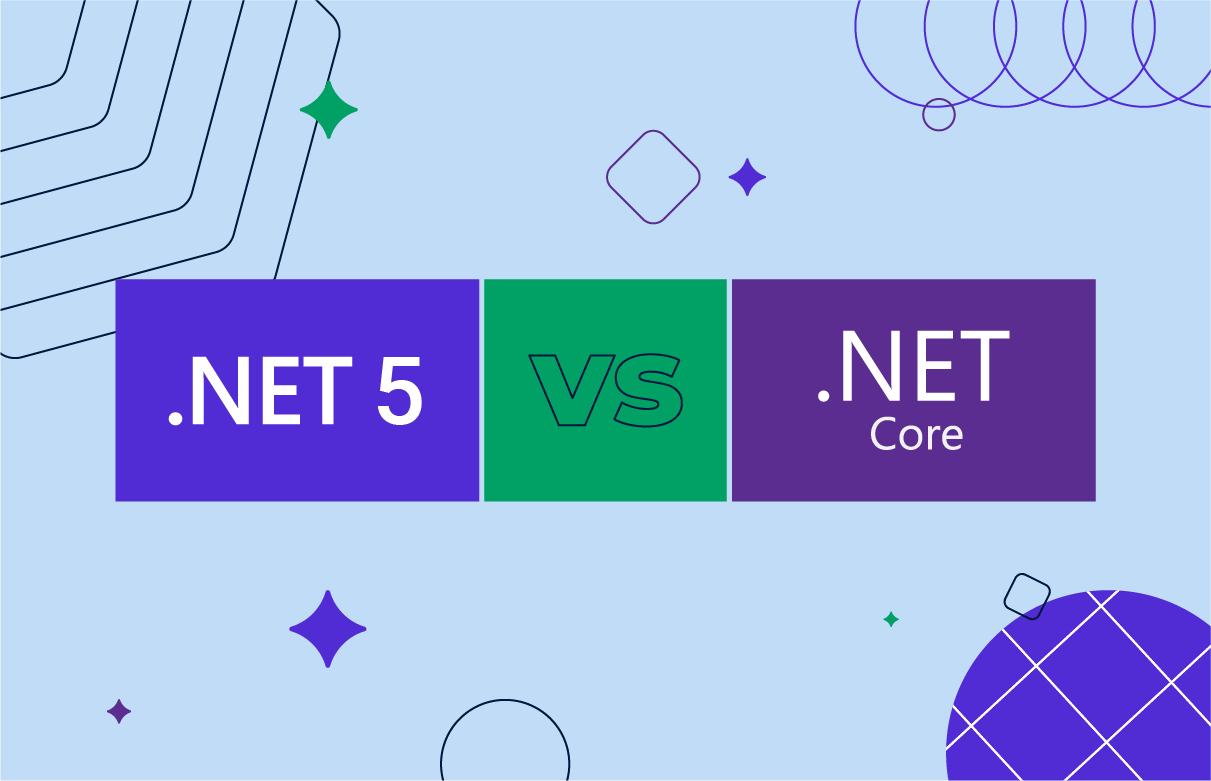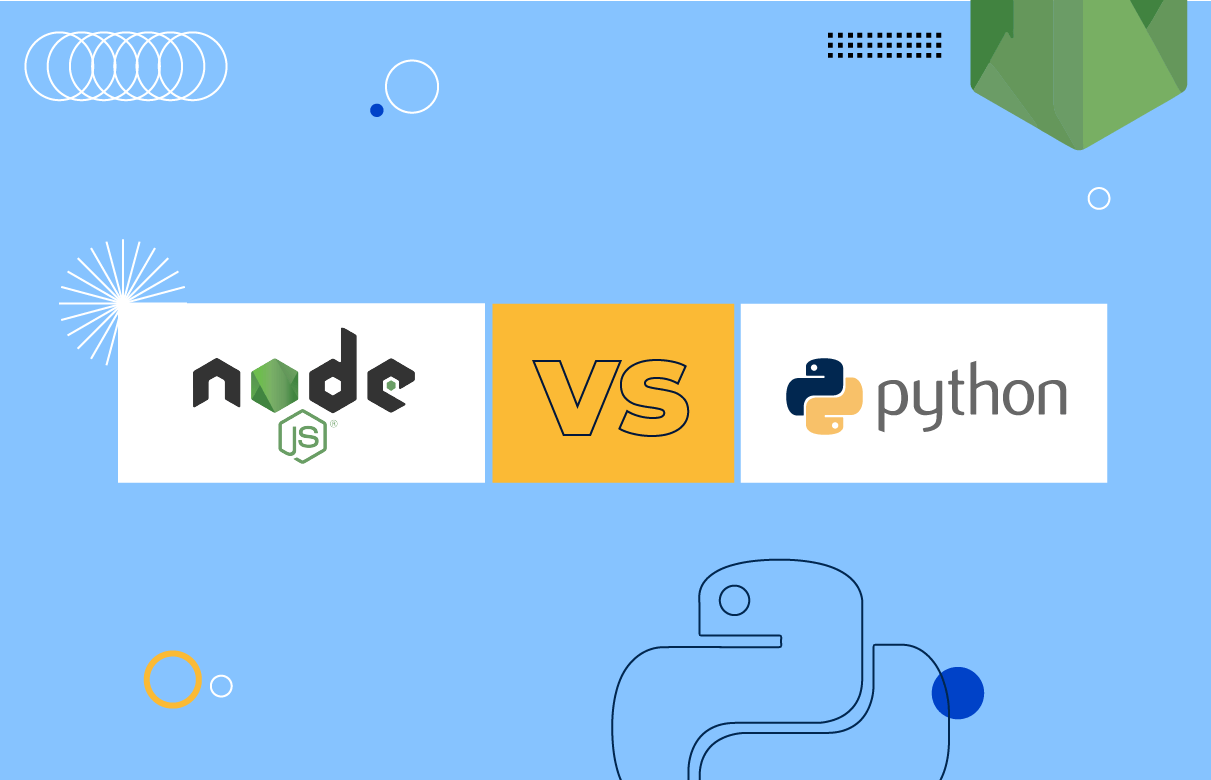Numerous frameworks have been created to streamline the web development process, increase flexibility, and reduce time to market. Without the use of frameworks, modern web development could be a nightmare for software engineers, requiring them to construct databases, business logic, security features, and various other components from scratch.
This article talks about the essence of frameworks and provides a list of the best frameworks for web development in 2024.
Develop your custom software with SaM Solutions’ engineers, skilled in the latest tech and well-versed in multiple industries.
What Is a Web Framework?
Think of a framework as a box filled with Lego bricks you can use to construct whatever you need. It is a platform equipped with pre-assembled programming modules, tools, and libraries, ready to be utilized in developing software products.
Frameworks dictate the rules for building the architecture of websites, applications, APIs, services, and other solutions. Thus, you create the skeleton for your project quickly and can further extend it according to specified requirements.
Architectural patterns
Web development frameworks are categorized into various groups based on their architectural type or the organization and interaction of their components. Understanding the architectural paradigm allows developers, even those unfamiliar with a specific framework, to grasp its functionality easily.
Three common paradigms
- MVC (Model-View-Controller). The majority of frameworks adhere to the MVC architectural pattern. It separates the application data, user interface, and business logic into three distinct components: model, view, and controller. Each component can be modified independently.
- MVVM (Model-View-ViewModel). This architecture also divides models and views, allowing separate modifications. The MVVM pattern comprises three components:
- Model handles the logic for data operations and describes the essential data required for the application to function.
- View represents the graphical interface elements such as windows, lists, buttons, etc.
- ViewModel acts as an abstraction of the View and a wrapper for data from the Model. The ViewModel contains a converted Model to View and the commands that the View can use to interact with the Model.
- Three-tier organization. Applications following this architecture are structured into three layers:
- Client — the user interface layer.
- Application server — this layer connects the client application.
- Database server — the layer that interacts with the application server and manages the database operations.
A framework can also include utility programs, code libraries, scripting languages, and other software to facilitate the development and integration of various components of a large software project.
As a rule, web development platforms are customizable, meaning you can take ready-to-use templates and components and tailor them to your specific needs. You can also implement your own code into the platform.
Advantages of Using Frameworks
Why do most developers rely on frameworks? In essence, because they streamline the creation and maintenance of web projects. Below is a list outlining the benefits of utilizing web development frameworks.
Economic benefits
- Speedy development. Frameworks save programmers the trouble of reinventing the wheel by performing typical tasks from the ground up when starting a project. Instead, developers use pre-written templates and tools to quickly establish the project foundation.
- Reliability and security. Framework components have been created and refined by thousands of developers, meaning that they underwent extensive testing in various scenarios. This reduces the likelihood of downtimes in the future.
Technical benefits
- Reduced errors. The community ensures the quality of framework components, so you can feel safe implementing them into your project. Moreover, framework methodologies typically integrate the best software engineering practices, helping you avoid design obstacles and eliminate bugs.
- Simplified maintenance. Frameworks establish a standardized structure for application development, making apps easier to maintain and refine. With a consistent organization of app components and operational principles, any developer can quickly understand and contribute to the project, facilitating the addition of functionality or making changes seamlessly.
- Improved performance. Framework-based solutions tend to work much faster and ensure higher loading capacity, which is particularly crucial for ecommerce solutions. Moreover, they are easily scalable to accommodate growth and increased demand.
Utilizing frameworks is especially vital for large projects with complicated architectures and interdependencies. There are only two situations where native programming is warranted: for exceedingly simple projects with no anticipated future development, or projects demanding intensive low-level optimization. In all other cases, framework-based development offers swifter results and ensures superior quality.
The Best Front-End Frameworks
Front-end web frameworks manage the user interface, encompassing visual elements of a website or application that end users engage with. These frameworks utilize front-end programming languages like HTML, CSS, and JavaScript, addressing tasks such as UX/UI design, templates, code snippets, SEO optimization, and user interaction management.
Among the best web development frameworks for the front end are React, Angular, Vue.js, Ember.js, and jQuery.
1. React
In actual fact, React is not a framework but an open-source JavaScript library, facilitating the creation of responsive user interfaces for web applications.
Due to declarative syntax and component-based architecture, React allows developers to effortlessly construct complex UI elements with reusable components, fostering code modularity and maintainability. This modular approach streamlines development and contributes to team collaboration, as components can be easily shared and integrated across projects.
Through techniques such as virtual DOM rendering and efficient state management, React ensures lightning-fast rendering and optimal user experience, even in resource-intensive applications.React’s versatility extends beyond web development with tools like React Native. This cross-platform compatibility empowers developers to leverage their existing React skills to build native mobile applications for iOS and Android platforms, thereby maximizing code reuse and reducing development time and costs.
SaM Solutions’ talented React team is available to support you in any aspect of your React-based web or mobile development project.
Furthermore, React’s extensive ecosystem of tools amplifies its capabilities, providing developers with a wealth of resources to enhance their productivity and address diverse use cases. Whether it is state management solutions like Redux, routing libraries like React Router, or UI component libraries like Material-UI, React’s ecosystem offers solutions for virtually every aspect of front-end development.
2. Angular
Angular is one of the most powerful front-end frameworks, as it allows for creating websites, single-page web apps, PWAs, mobile apps, ecommerce solutions, and more. The original version of this framework written in JavaScript was released by Google in 2010 under the name AngularJS. In 2016, it was completely redesigned using TypeScript and renamed to Angular 2+ or simply Angular. The new version focuses on scalability and speed.
Angular’s rich ecosystem includes powerful features such as two-way data binding, dependency injection, modular architecture with Angular Modules, component-based UI development with Angular Components, and robust routing capabilities with Angular Router. Furthermore, Angular offers comprehensive support for reactive programming paradigms with RxJS integration, facilitating the creation of responsive and interactive applications.
The main drawback of Angular is its code complexity, which results in a large codebase that can be hard to maintain and potentially impact the app’s performance. Nevertheless, the Angular team optimizes the framework’s size with each subsequent release, ensuring continuous improvements and enhanced user experiences.
Want to Build Angular Applications?
Unlock the potential of Angular with our expert team and elevate your online presence.
3. Vue.js
Vue.js is a progressive, simple, and flexible JavaScript framework for building user interfaces. It features a highly adaptable MVVM architecture that can be easily integrated with third-party solutions. Unlike Angular, Vue is very lightweight, so it’s a perfect fit for dynamic projects and single-page applications.
Due to its intuitive and approachable syntax, Vue allows developers to quickly grasp and implement complex concepts. Its reactive data binding system ensures seamless synchronization between data and DOM elements, enhancing the efficiency of applications.
Moreover, its component-based architecture promotes code reusability and maintainability, enabling developers to construct scalable and modular applications with ease.
4. Ember.js
Another popular choice for front-end software engineers is Ember.js. It can help you build modern user interfaces for web, mobile, and desktop solutions.
Ember.js boasts a powerful routing system that facilitates seamless navigation and URL management within complex applications. One of its standout features is Ember Data, an intuitive data management library that simplifies fetching, storing, and manipulating data from various sources.
The templating engine, powered by Handlebars, enables developers to create dynamic and interactive user interfaces effortlessly. With built-in solutions for common challenges like state management and testing, Ember.js empowers developers to focus on crafting high-quality, scalable applications without getting bogged down in repetitive tasks.
Using Ember, you can always rely on the active community of talented developers, who regularly release new features and keep improving the platform.
5. jQuery
jQuery is a lightweight, fast, and feature-rich JavaScript library designed to simplify the client-side scripting of HTML. It is often referred to as a front-end framework due to its widespread use and capabilities, although it’s technically a library.
With an easy-to-use jQuery API that works across different browsers, things like HTML document traversal and manipulation, event handling, and animation become much simpler. A concise and readable syntax allows developers to write less code while achieving more, making it ideal for manipulating the DOM and creating dynamic web pages. jQuery simplifies common tasks such as selecting and manipulating DOM elements, enabling rapid development of interactive user interfaces.
Additionally, it provides a wide range of plugins that extend its functionality, allowing developers to easily incorporate features like sliders, carousels, and form validation into their projects.
While more recent front-end frameworks like React, Angular, and Vue.js offer more robust solutions for developing complex applications, jQuery remains a popular choice for simpler projects and for the upkeep of legacy systems initially developed with it.
The Best Back-End Frameworks
Back-end web frameworks are responsible for the hidden part of a website or application that developers interact with. They deal with server and database functioning, solution logic and architecture, routing protocols, data security, authorization options, and more. These platforms are based on back-end programming languages such as Java, Ruby, Python, and PHP.
The most popular back-end frameworks include Express, Django, Laravel, Ruby on Rails, and Spring.
1. Express
Express.js, commonly referred to as Express, is a flexible and convenient framework for the Node.js environment. Offering a thin layer of fundamental web application features, Express enables developers to create efficient and scalable server-side logic with its fast routing mechanism.
The framework also supports middleware integration, allowing developers to perform additional tasks on request and response objects seamlessly. Furthermore, it provides a vast range of HTTP utility methods and middleware, making it easier to create robust APIs.
Express’s minimalist structure and numerous available plugins also mean that the framework is highly adaptable, giving developers the freedom to use it as a base for any web application or REST API.
2. Django
Django is a high-level Python web framework that encourages rapid development and pragmatic design. Known for its “batteries-included” approach, Django comes with a plethora of built-in features: an ORM (Object-Relational Mapping) to facilitate database operations, a powerful URL routing system, and an administrative interface that is dynamically generated and ready to use out of the box. This makes it particularly suited for developers looking to get a robust application up and running quickly.
Django emphasizes security by providing built-in protection against many security threats like SQL injection, cross-site scripting, cross-site request forgery, and clickjacking. Its scalable nature and the ability to handle high traffic with ease make Django a popular platform for creating complex enterprise-level applications.
3. Laravel
Laravel is a prominent PHP framework designed to build large-scale and complex web apps. Using the MVC model, it boasts a simple, elegant syntax and numerous packages that expand out-of-the-box API support.
The framework offers tools like Eloquent ORM for expressive database interactions, a Blade templating engine for intuitive and flexible UI creation, and robust background job processing with queues.
Laravel simplifies common development tasks such as routing, sessions, caching, and authentication, making it more efficient to develop complex applications. Its extensive ecosystem includes tools like Laravel Forge for server management and Laravel Nova for administration panel construction, further enhancing its utility.
You can quickly learn Laravel with the help of the tutorial website Laracasts, which offers hundreds of helpful videos.
4. Ruby on Rails
Ruby on Rails (RoR or simply Rails) is an open-source back-end web application framework written in the Ruby programming language and based on the MVC architectural pattern. It is particularly acclaimed for its “convention over configuration” design philosophy, which streamlines project setup and reduces the coding required.
Rails includes a built-in ORM system called ActiveRecord, which simplifies database interactions. It also boasts comprehensive standard libraries that support a wide range of web standards and services, including web sockets and emails. The framework follows the DRY (Don’t Repeat Yourself) principle and emphasizes RESTful application design pattern, promoting cleaner code and maintainability.
Though RoR was invented almost 20 years ago, it is still a popular tool for developing complex web applications.
5. Spring
Spring is a powerful and versatile back-end framework widely used in the Java ecosystem. It provides a comprehensive programming and configuration model for modern Java-based enterprise applications — on any kind of deployment platform.
A key element of Spring is its dependency injection (DI) mechanism, which promotes loose coupling through DI and aspect-oriented programming. Spring’s core container allows for flexible configuration and integrates seamlessly with almost any Java application.
Another significant feature is Spring Boot, which simplifies the development of new Spring applications through convention over configuration. Spring also supports a wide array of data access technologies, transaction management, and robust security features, enhancing its capability to handle complex business requirements. Spring’s extensive and scalable architecture makes it ideal for building high-performance systems with reduced development effort and increased testing friendliness.
Why Is SaM Solutions the Best Web Development Service Provider?
SaM Solutions is a top web development company due to its comprehensive expertise, commitment to delivering tailor-made solutions, and innovative approach. With over three decades of experience, our company has mastered the art of blending advanced technologies with strategic insights to create robust, scalable, and future-proof digital platforms.
Our team of dedicated web developers and IT professionals ensures that each project is handled with meticulous attention to detail, from conception through to deployment and beyond.
By following the customer-centric approach, our experts deliver high-quality, efficient, and secure web solutions, consistently meeting client expectation.
Conclusion
Which framework is the best for web development? Determining the best framework for web development largely depends on the specific needs and goals of a project, as well as the expertise of the development team.
Each framework has its strengths and specialized features that cater to different types of web development projects. Therefore, the best framework is the one that aligns most closely with the project requirements, developer expertise, and desired outcomes.



























 5 Reasons Why Your Business Needs a Mobile eCommerce Application
5 Reasons Why Your Business Needs a Mobile eCommerce Application Using Salesforce to Improve Your Sales Pipeline: Five Tips
Using Salesforce to Improve Your Sales Pipeline: Five Tips Cross-Platform Mobile Development: Five Best Frameworks
Cross-Platform Mobile Development: Five Best Frameworks How to Develop Custom Accounting Software
How to Develop Custom Accounting Software 10 Best Web Development Frameworks in 2024
10 Best Web Development Frameworks in 2024




![[Tech Talk] What Developers Should Know About SQL Optimization, Part 1: Fundamentals](https://www.sam-solutions.com/blog/wp-content/uploads/fly-images/30279/SQL-video-cover-370x238.webp)






